Breast Reduction in Thailand
Search and Compare the Best Clinics and Doctors at the Lowest Prices for Breast Reduction in Thailand
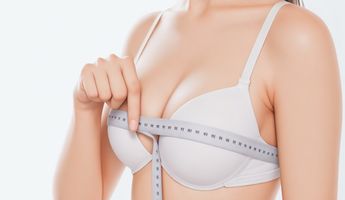
Find the best clinics for Breast Reduction in Thailand
With Medijump you can browse 37 facilities offering Breast Reduction procedures in Thailand. The cheapest price available is $1,499 in Nakhon Si Thammarat. And for the cheapest price globally, prices start from $89 in Czech Republic.
Breast Reduction in Nakhon Si Thammarat
Price: $ 1,499
Breast Reduction in Bangkok
Price: $ 2,779
Czech Republic offers the best prices Worldwide
Price: $ 89
From 10 verified reviews
Makee Chanel, 28 June 2019
Dr Darin offered a very professional consultation her staff were very patient with my questions and I left the consultation feeling fully informed. My surgery went extremely well. I am now two months out and am very happy with the results. I would absolutely recommend Dr.Darin to anyone!
Tokai Clinic, located in Bang Na, Bangkok, Thailand offers patients Breast Reduction procedures among its total of 23 available procedures, across 2 different specialties. Currently, there's no pricing information for Breast Reduction procedures at Tokai Clinic, as all prices are available on request only, whilst the national average price is approximately ฿171,360. There is currently a lack of information available on the specialists practicing at the Clinic, and they are not accredited by any recognized accreditations institutes
From 13 verified reviews
Vannchi Jonathan, 07 January 2020
Great Doctor and staffs
Dr. Kamthorn Clinic - Nakhon Si Thammarat, located in Khanom, Nakhon Si Thammarat, Thailand offers patients Breast Reduction procedures among its total of 27 available procedures, across 4 different specialties. The cost of a Breast Reduction procedure starts from £1,176, whilst the national average price is approximately £3,737. All procedures and treatments are undertaken by the lead specialist at the Clinic, and they are not accredited by any recognized accreditations institutes
Sanpaulo Hospital, located in Bor Fai, Hua Hin, Thailand offers patients Breast Reduction procedures among its total of 27 available procedures, across 5 different specialties. The cost of a Breast Reduction procedure starts from $5,002, whilst the national average price is approximately $4,762. There is currently a lack of information available on the specialists practicing at the Hospital, and they are not accredited by any recognized accreditations institutes
From 15 verified reviews
TONG OLAN, 15 August 2022
I used to have double eyelid here 20 years ago. Now the eyes are still pretty. The doctor does it very naturally. No one can see it. So if we don't say we did it
From 14 verified reviews
TONG OLAN, 14 August 2022
I used to have double eyelid here 20 years ago. Now the eyes are still pretty. The doctor does it very naturally. No one can see it. So if we don't say we did it
From 19 verified reviews
Chalotorn Thongmee, 05 December 2022
I had an amazing experience at Meko Clinic Praram 2. The doctor was extremely knowledgeable, caring and compassionate. The staff was exceptionally friendly and welcoming. The facility was clean and modern. I felt so relaxed and at ease. I would highly recommend Meko Clinic Praram 2 to anyone looking for quality healthcare.
From 2 verified reviews
Kaleia, 29 August 2024
The cancer screening process at Ekachai Hospital was seamless. The staff was knowledgeable and made me feel at ease throughout the entire experience.
From 2 verified reviews
Padma, 18 June 2024
The surgery changed my life. No more back pain, and I feel so much more confident.
From 2 verified reviews
Rachel, 24 July 2024
Amazing results! My nose looks natural and perfect. Highly recommend.
From 2 verified reviews
Tabitha, 12 June 2024
Siam Laser Clinic - Thong Lor offers excellent breast reduction treatments. Customers praise skilled staff, effective results, and professional care.
From 2 verified reviews
Udela, 01 June 2024
Excellent service. The laser hair removal process was smooth and easy. The clinic has a relaxing atmosphere.
From 2 verified reviews
Valarie, 01 July 2024
Excellent service and amazing results. My eyelids look natural and youthful. Highly recommend!
From 2 verified reviews
Oakley, 15 June 2024
Professional service and clear aftercare instructions. My mole removal was smooth and successful.
MedAsia Healthcare Complex, located in Bang Bon, Bangkok, Thailand offers patients Breast Reduction procedures among its total of 62 available procedures, across 5 different specialties. Currently, there's no pricing information for Breast Reduction procedures at MedAsia Healthcare Complex, as all prices are available on request only, whilst the national average price is approximately $4,762. All procedures and treatments are undertaken by just a small team of specialists, with 3 in total at the Hospital, and they are not accredited by any recognized accreditations institutes
Thitiwat Clinic -The leader Aesthetic Surgery & Skin Laser Center, can be found in Laem Sor, Koh Samui, Thailand and offers its patients Breast Reduction procedures as well as 22 other procedures, across 3 different procedure categories. At present, there is no pricing information for Breast Reduction procedures at Thitiwat Clinic -The leader Aesthetic Surgery & Skin Laser Center. The pricing information is quite specialised, so it's only available on request, and the average price is around $4,762. Currently, there's no information available about the doctors at the Clinic, and Thitiwat Clinic -The leader Aesthetic Surgery & Skin Laser Center is accredited by just one known accreditations institute, ASPS - American Society of Plastic Surgeons
- Home
- Thailand
Compare Before & After Photos of _procedure_photos.phpBreast Reduction

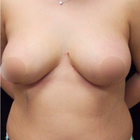
Front view

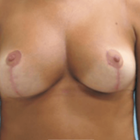
Front view

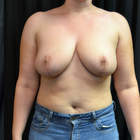
Front view
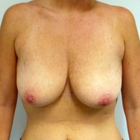

Front view


Front view


Front view
WHY US?
At Medijump, we're making medical easy. You can search, compare, discuss, and book your medical all in one place. We open the door to the best medical providers worldwide, saving you time and energy along the way, and it's all for FREE, no hidden fees, and no price markups guaranteed. So what are you waiting for?

Free

Best Price

Widest Selection

Risk-Free
What you need to know about Breast Reduction in Thailand
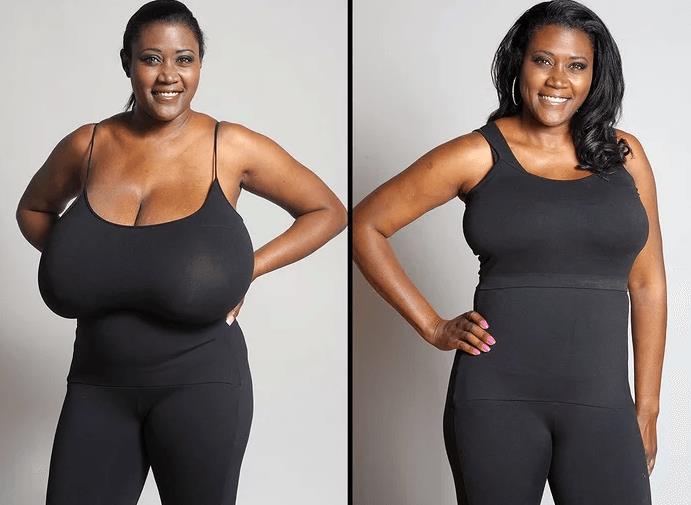
Female Breast reduction (reduction mammoplasty), also known as Reduction Mammoplasty, is a surgical operation to reduce the weight and volume of the breasts. During the procedure, fat, glandular tissue and skin are removed from the breasts, which are then reshaped, and the nipples repositioned. The nipple-areola complex (NAC) is preserved to ensure that lactational ability is not affected. The mammoplasty is performed for three reasons, aesthetic, physical and psychological.
Breast size is determined by genes, hormones, body frame, and weight. For most women, breast size is proportionate to the body, but for some, the breasts are particularly large. Large breasts can cause physical symptoms such as discomfort, backache, neck pain, and skin irritations. Oversized breasts can also cause psychological distress. Common complaints from women with large breasts include not being able to wear fashionable clothes and finding it difficult to take part in active sports. In these cases, breast reduction surgery can be an option.
What does a Breast Reduction Procedure Involve?
The procedure begins with making you lay in the supine position. Anesthesia is given to avoid pain during surgery. The area is sterilized and an incision is given around the areola and down your breasts. The flap of skin containing areola and nipple is displaced and excessive fat, breast tissue, and skin are removed to lessen the size of your mammary gland. In the next step, breasts are reshaped, areola and nipples are again placed over the reduced breasts and stitches are given.
In some cases, when a large amount of tissue and fat is removed, skin flap with areola and nipples is detached and repositioned at a higher level according to the new size. Drainage tubes are inserted into the breasts to drain away blood and fluid. Bandages are applied over the stitched incisions. You are asked to wear a surgical bra. It is tried to make both breasts look alike; however, small variations in the size of breasts and areola can be there.
What about Breast Augmentation?
Breast augmentation might also be performed on women who suffer from a condition called macromastia. It can be due to various reasons such as hypertrophy of adipose tissue in the breast, after menopause, postpartum, genetics, etc. In this condition, your breasts are sagging, and their size is bigger in proportion to your body, causing a number of problems. A woman affected by macromastia suffers from pain in the head, neck, shoulders, and back. Blood circulation and respiration are also disturbed. Men who experience gynecomastia can also opt for breast reduction surgery.
Another case where breast reduction can be an option is when breasts grow particularly large because of the use of hormone replacement therapy (HRT).
What is the cost of Breast Reduction in Thailand?
It's crucial to bear in mind that Breast Reduction is a substantial procedure. Consequently, contemplating the expense of this process within Thailand is critical. While the total cost might fluctuate based on individual circumstances and the intricacy of the operation, it typically includes the cost of anesthesia, hospital expenses, surgical equipment, and the surgeon's charge. Having a comprehensive understanding of the total price is critical to make an educated decision and align your financial planning accordingly.
Numerous factors could influence the expense of a Breast Reduction in Thailand. This includes the skill level of the surgeon, the complexity of the procedure, the kind of anesthesia applied, and postoperative care services. Thorough research and careful financial planning should enable you to handle the costs associated with the process. Also, if needed, you could consider alternatives for financial aid or insurance cover.
How Long Should I Stay in Thailand for a Breast Reduction Procedure?
Surgery can last between 2 to 5 hours and sometimes even longer depending upon the size of your breasts and amount of fat and tissue that is to be removed - an overnight stay as an inpatient is required. After your condition is monitored, you are discharged from the hospital. You have to stay for at least 14 days in Thailand for follow up procedures. Regular check-ups are advised in the first few days after surgery. Oral pain killers are given to deal with pain and swelling. Stitches are removed in 2 weeks after which you are allowed to go home. In case you notice any redness, secretion, abnormal pain or inflammation, consult your doctor.
What's the Recovery Time for Breast Reduction Procedures in Thailand?
It takes several months for recovery from a breast reduction surgery. You cannot go to work for 1 to 2 weeks after the surgery. There will be pain and swelling in the initial days for which you are given some medicines. Avoid intensive physical activity for at least 1 month. You are asked not to wear underwire bras for a few months. You are allowed to wear a normal bra after 4 weeks. It takes 6 to 8 weeks for the swelling and tenderness to go away. Even after complete recovery, scars do not disappear. However, they are faded and become less visible. Changes continue to take place for a year after going through this surgery.
What sort of Aftercare is Required for Breast Reduction Procedures in Thailand?
You should consider the following points to take care of yourself after surgery:
- Do come for regular check-ups.
- Take your medicines regularly, as and when prescribed by your physician.
- Make sure that someone lives with you to look after you.
- Follow a healthy diet plan for a better recovery.
- Do not wear fancy, underwire bras in the early days. Wear surgical bra only.
- Wear loose clothes, tees, and shirts.
- Avoid excessive, unnecessary movement of your breasts.
- Do not take a bath in the first few days, a wet bandage can be the cause of infection.
- Do not ignore any kind of soreness, redness or abnormal secretions from your breasts. Visit your doctor immediately.
- Drink plenty of water. It is very effective for a quick recovery.
- Use icepacks to help you with swelling.
- Do not try to lift heavy objects because your movement is restricted due to stitches. It can open up your stitches before time.
- Do some stretching exercises when told by your physician.
What's the Success Rate of Breast Reduction Procedures in Thailand?
Breast reduction mammoplasty is found to be successful in most of the cases. According to a survey, 80% of women are satisfied with the results of the surgery. This effectively reduces neck pain, back pain, headache, and shoulder pain, with your breasts no longer sagging and causing these problems. Respiratory and circulatory problems are also resolved. In case this surgery is not successful, it leaves prominent scars which can be subjected to hypertrophy. There might be less than the required amount of tissue and fat removal. Sometimes, more breast tissue is removed leaving your chest flat. A secondary breast reduction surgery is performed to cope with this.
For an in-depth and personal review of the pros and cons of Breast Reduction, including before and after shots, watch this video blog.
Are there Alternatives to Breast Reduction Procedures in Thailand?
Following are some alternatives to reduce your breast size without going through a surgery:
- Weight Loss: losing weight can also be effective in the case of reducing breast size. Some exercises are there to help you decrease your size. Exercise removes excess adipose tissue making your breasts smaller.
- Liposuction: it is a less invasive method in which a small incision is given to insert a cannula and fat is sucked from it reducing breast size. There are least scarring and recovery is faster.
- Fitting bra: it is not a permanent method to reduce your breast size but a specialized fitting bra can be helpful in making your breasts look smaller. It is not a standard bra.
What Should You Expect Before and After the Procedure
Knowing what to expect before and during a Breast Reduction helps you prepare physically, intellectually, and emotionally for the experience. A comprehensive health examination is scheduled before the procedure. Along with preparing for the procedure by following the pre-surgery instructions supplied by your healthcare institution, this is also your chance to discuss your hopes and concerns with the surgeon. Your food routine, medication regimen, and lifestyle practises might need to change as a result of this preparation.
After the surgery, it's common to feel some soreness, inflammation, and sometimes even bruising. All of these symptoms can be treated with the right medication. It's important to unwind, refrain from strenuous activity for a few weeks, wear a bra with a specific purpose, and follow a specific wound care regimen.
What are Potential Risks of Breast Reduction?
The Breast Reduction, similar to any other surgical procedure, poses possible risks and complications such as infection, bleeding, altered sensation in the nipple or breast due to anesthesia, and difficulties in breastfeeding post-operation. It is imperative to have a detailed discussion about these potential issues with your healthcare professional at the consultation phase.
It's important to know that the probability of these risks occurring is minimal and can be reduced further by opting for a well-respected clinic and surgeon, following the pre-surgical instructions, and adhering to the aftercare routine provided.
Whilst the information presented here has been accurately sourced and verified by a medical professional for its accuracy, it is still advised to consult with your doctor before pursuing a medical treatment at one of the listed medical providers
No Time?
Tell us what you're looking for and we'll reachout to the top clinics all at once
Enquire Now

Popular Procedures in Thailand
Prices Start From $85

Prices Start From $120

Prices Start From $692

Prices Start From $236

Recommended Medical Centers in Thailand for Breast Reduction

- Interpreter services
- Translation service
- Religious facilities
- Medical records transfer
- Medical travel insurance
- Health insurance coordination
- TV in the room
- Safe in the room
- Phone in the room
- Private rooms for patients available

- Interpreter services
- Translation service
- Religious facilities
- Medical records transfer
- Medical travel insurance
- Health insurance coordination
- TV in the room
- Safe in the room
- Phone in the room
- Private rooms for patients available

- Interpreter services
- Translation service
- Religious facilities
- Medical records transfer
- Medical travel insurance
- Health insurance coordination
- TV in the room
- Safe in the room
- Phone in the room
- Private rooms for patients available

- Interpreter services
- Translation service
- Religious facilities
- Medical records transfer
- Medical travel insurance
- Health insurance coordination
- TV in the room
- Safe in the room
- Phone in the room
- Private rooms for patients available

- Interpreter services
- Translation service
- Religious facilities
- Medical records transfer
- Medical travel insurance
- Health insurance coordination
- TV in the room
- Safe in the room
- Phone in the room
- Private rooms for patients available

- Interpreter services
- Translation service
- Religious facilities
- Medical records transfer
- Medical travel insurance
- Health insurance coordination
- TV in the room
- Safe in the room
- Phone in the room
- Private rooms for patients available

- Interpreter services
- Translation service
- Religious facilities
- Medical records transfer
- Medical travel insurance
- Health insurance coordination
- TV in the room
- Safe in the room
- Phone in the room
- Private rooms for patients available

- Interpreter services
- Translation service
- Religious facilities
- Medical records transfer
- Medical travel insurance
- Health insurance coordination
- TV in the room
- Safe in the room
- Phone in the room
- Private rooms for patients available

- Interpreter services
- Translation service
- Religious facilities
- Medical records transfer
- Medical travel insurance
- Health insurance coordination
- TV in the room
- Safe in the room
- Phone in the room
- Private rooms for patients available

- Interpreter services
- Translation service
- Religious facilities
- Medical records transfer
- Medical travel insurance
- Health insurance coordination
- TV in the room
- Safe in the room
- Phone in the room
- Private rooms for patients available
Breast Reduction in and around Thailand
About Thailand
Thailand is consistently voted one of the most popular travel destinations in the world, leading the way for Asian countries with over 60 state-of-the-art JCI-accredited facilities. The country is renowned for its tropical beaches, floating markets, stunning royal palaces, and Buddhist temples. The vibrant capital, Bangkok, blends tradition and modernity with its ultramodern cityscape featuring brand-new high-rise condominiums side-by-side with quiet, serene canalside communities. As per the Tourism Authority of Thailand, Phuket, Koh Samui, Chiang Mai, Hua Hin, and Pattaya are the most sought-after tourist spots outside Bangkok, each boasting excellent yacht chartering opportunities.
Each year, Thailand opens its doors to hundreds of thousands of medical tourists. These individuals traverse the globe to receive treatment, with a significant number hailing from the local SE Asia region, Australia, the United States, and the Middle East. Recently, there has been an upsurge in the number of visitors coming in from China for medical purposes.
The reasons for Thailand's popularity as a medical tourism destination are its outstanding private healthcare system, attractive tropical climate, and competitive pricing. In the list of top medical tourism destinations worldwide, Thailand currently holds the third position. The procedures that attract most patients are cosmetic surgeries, including breast augmentations, gender reassignment surgery, and CoolSculpting, along with cardiac surgery, orthopedics, and urology.
Popular Parts of Thailand
Thailand, with a population of just under 70 million people spread over an area of around 500,000 square kilometers, has several regions and cities that are widely popular with both natives and tourists. Offering a diverse blend of urban and rural experiences, beach life and inland natural beauty, each part of Thailand offers a unique angle into the rich and complex Thai culture.
Arguably the most popular area of Thailand is the capital city, Bangkok. Consistently ranked as one of the most visited cities in the world, Bangkok is an ever-buzzing urban hub with its busy streets, modern lifestyle, magnificent temples and opulent palace, alongside a pulsating nightlife. This city is typically the entry gateway for a vast majority of the 30 million tourists who visit Thailand each year. Known for its glimmering cityscape and vibrant food scene, Bangkok is indeed a compulsory stop in every traveler's itinerary.
While Bangkok is the country's urban heart, there's more to Thailand than just its capital. Among the other popular regions are the beachside island paradise of Phuket and Koh Samui, the city of Pattaya, and Hua Hin - each of them a haven for beach lovers and anyone seeking a laid-back vibe away from bustling city life. However, for those who prefer the call of the inland and a dash of adventure, Chiang Mai, nestled in the lush jungles of northern Thailand offers a refreshing and unique proposition with its derivative local culture, serene temples and interaction with native wildlife.
Weather and Climate in Thailand
Known for its truly tropical climate and scorching temperatures, Thailand, in general, is hot and humid all year round. The coastal locations do benefit from the cooling sea breeze, a luxury urban Bangkok is denied. Average temperatures range from 28°C (82°F) up to 35°C (95°F). However, during the Hot Season (March to June), temperatures can top 40°C (104°F).
The infamous Rainy Season tends to start in July and continue through to October; during this time expect heavy rainfall, often amounting to flooding in some areas. It will remain warm to hot but humidity levels will rise and the mosquitos will come out to play!
November to February is often referred to as the Cool Season when less rain is expected and the temperatures tend not to rise above 35°C (95°F).
From a tourist perspective; the High Season lasts from November to March and the Low Season from April to October. But be aware of the Shoulder Seasons of April to June and September to October, when Thailand is less impacted by the Rainy Season and less busy with tourists – these can be the ideal times to visit.
In a nutshell, Thailand is a Shorts and T-shirt Country, you’re never really going to be cold, so pack light; shorts, t-shirts, vests, skirts, singlets, and light dresses. Maybe pack jeans and shoes if you’re planning on going to a swanky roof-top bar in Bangkok or to a temple where flip-flops are not acceptable.
Don’t forget mosquito spray as the little pests can get everywhere; big ones and little ones! Always protect against the sun; with high factor sunscreen and UV-protective sunglasses. The usual medications found at home should be available in most pharmacies.
Getting around in Thailand
With the Suvarnabhumi International Airport being serviced by some of the world’s major airlines, tourists can fly into Thailand from almost anywhere in the world, sometimes with a connection along the way. All the popular regions have their own international airports, with the exception of Pattaya, which is just a 90-minute taxi ride from Bangkok. However, arrival destinations are slightly limited outside of Bangkok, but the likes of Emirates and Qatar Airways will fly into Phuket International Airport. The rest, mostly fly in from local countries on budget airlines, including Scoot, SilkAir, AirAsia, and Lion Air to name a few.
For domestic flights, the airports are nicely linked in Thailand with flights from as little as $45 USD one way. There are several budget airlines servicing these routes, including Thai Lion Air, AirAsia, Nok Air, Thai Airways, Bangkok Airways, and Thai Smile.
The train allows for even cheaper travel within Thailand and is far more comfortable than spending hours sitting on a bus. Bangkok has the BTS, or Skytrain, which allows for fast transfer from the airport into the city. Given the traffic in central Bangkok, the BTS offers a great alternative to being stuck in traffic jams.
Taxis are great, however, be sure to confirm the price before you begin your journey or better still, insist the ride goes on the meter – that is how you guarantee the cheapest and fairest price. But expect traffic in the city and any built-up areas.
Tourist Visas in Thailand
Before you travel to Thailand, it is important to stay updated with the latest visa requirements. While a number of countries are eligible for visa-free entry, the rules can sometimes shift, making it essential to verify before you travel.
If you are travelling from countries like the United Kingdom, the United States, Germany, Australia, Singapore, Canada, France, Italy, Japan, New Zealand, and South Korea can enjoy a stay of up to 30 days in Thailand without needing a visa. On the other hand, if you are visiting from China, India, Myanmar, Laos, Cambodia, Bhutan, Nepal, Bangladesh, Sri Lanka, Pakistan, and Uzbekistan, you will be granted the facility of a visa on arrival.
To get a visa on arrival here are the requirements:
1. You need to have a valid passport with at least 6 months of remaining validity.
2: You would need to show proof of a round-trip ticket within 30 days and confirmation of your accommodation for the first night in Thailand.
3. You need to demonstrate that you have sufficient funds for your visit, which is 10,000 THB per person or 20,000 THB per family.
Don't forget to carry a recent passport-sized photograph. The fee for a visa on arrival is 2,000 THB, and you can pay it via cash or credit card.
For more information, click here.
Additional Information
- The Thai Baht (THB) is the local currency. 1 USD is approximately around 34.5559 on average as of 2023.
- ATMs are readily available across Thailand and accept virtually all major bank cards (Visa, Mastercard). Credit card payment is accepted in most established restaurants and outlets, with the more local food vendors, for example, only accepting cash.
- Thai is the local language but due to the extremely well-established tourism industry in Thailand, English is spoken by most locals who work with tourists, and often signs will have an English translation.
- Buddhism is the primary religion in Thailand, with a large Muslim population in the south. The Royal Family is deeply revered throughout the country and should never be disrespected.
- There are many public holidays in Thailand, which aren’t always on the same day each year, including Songkran (Thai New Year), which is celebrated in mid-April, Labor Day, and Coronation Day in early May, Asanha Buja in July and Constitution Day in December.
Popular Searches
- Plastic Surgery in Thailand
- Dental Implants in Thailand
- Hair Transplant in Thailand
- Breast Augmentation Thailand
- Gastric Sleeve in Thailand
- Gender Reassignment Surgery in Thailand
- Laser Hair Removal in Bangkok
- Botox in Bangkok
- Dermatology in Bangkok
- Breast Augmentation in Bangkok
- Coolsculpting in Bangkok
- Veneers in Turkey
- Hair Transplant in Turkey
- Rhinoplasty in Turkey
- Stem Cell Therapy in Mexico
- Rhinoplasty in Mexico
- Liposuction in Mexico
- Coolsculpting in Tijuana
- Rhinoplasty in Korea
- Scar Removal in Korea
- Gastric Sleeve in Turkey
- Bone Marrow Transplant in India
- Invisalign in Malaysia
- Plastic Surgery in the Dominican Republic
- Tummy Tuck in the Dominican Republic
- Plastic and Cosmetic Surgery in Poland
- Rhinoplasty in Poland
- Hair Implant in Poland
- Dental Implants in Poland
- IVF in Turkey















